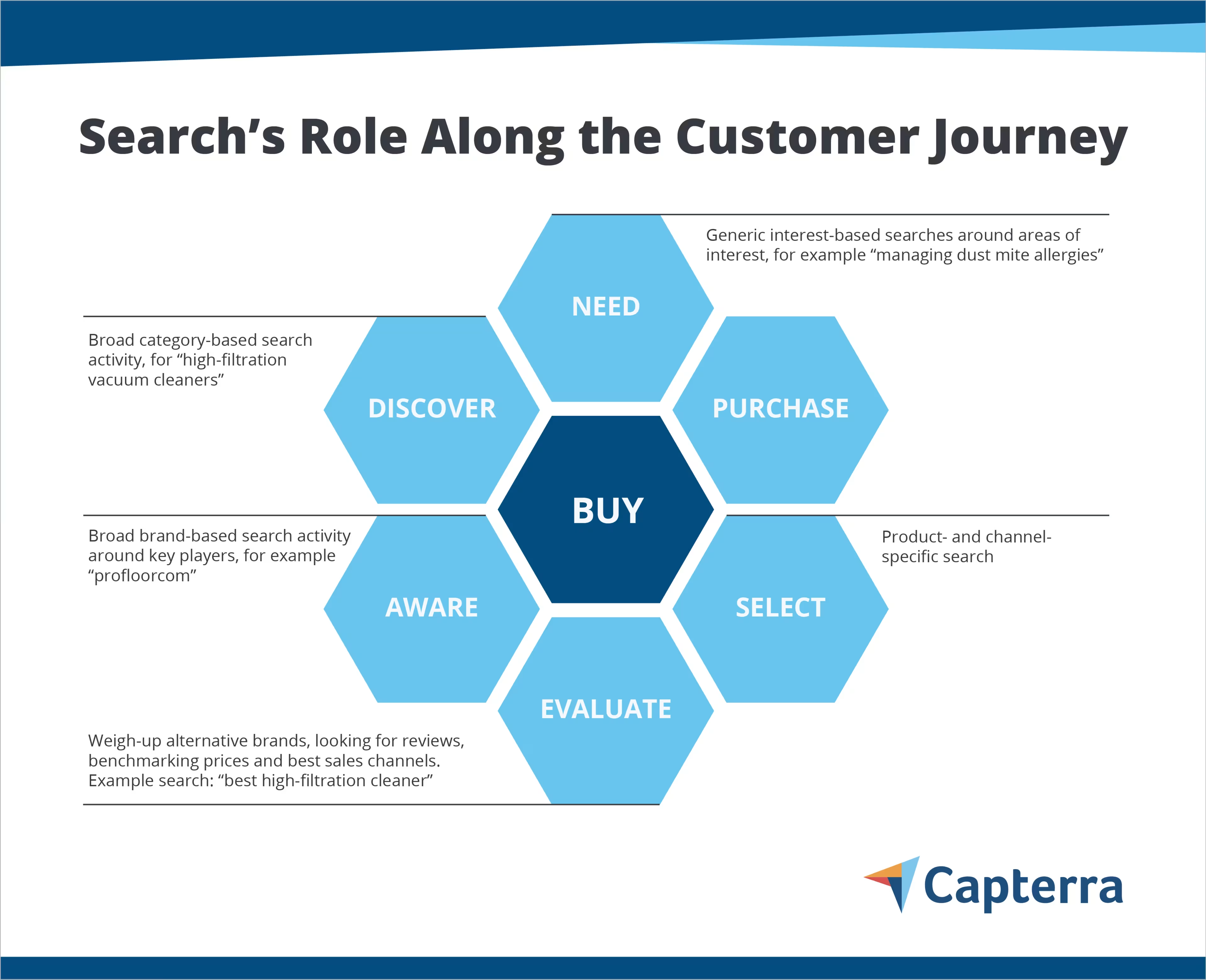A killer SEO content strategy means your marketing team is getting the right content in front of the right audience. Here are five steps you can take today to ensure a strong SEO game.

You may be inclined to approach content as a "throw spaghetti at the wall" kind of problem. If your marketing team considers search engine optimization (SEO) at all, it's simply to look for high-volume keywords to plop into your website content or blog posts.
Allow me to paint a different picture of SEO in your content by offering a new approach.
5 tactics that will bolster your SEO content strategy
Follow these steps to ensure your content is primed to rank in the SERPs.
1. Identify the key moments within your customer journey
As with all successful marketing projects, your SEO content strategy should start with a review of your customer journey map. Your map should pinpoint and define the different stages your customers go through while buying your product or service.
Let's say you own a clothing boutique. Your customers may come across your business for the first time through a social media ad, rediscover your business after searching for seasonal jackets, and make their first purchase only after they receive a coupon offer.
At each of these steps, your potential customer needs something different, and what they search for will reflect that.
Your SEO team's first task should be to identify the needs of your target customers in each of these key steps; those needs will inform how you choose keywords and create content for each phase of the customer journey.
What to do:
Appoint an SEO leader within your marketing team and empower them with the tools and resources they need to start identifying these key moments within your existing customer journey map.
2. Start with broad keywords; end with targeted ones
Now that you have an idea of when to best target your customers, you can start thinking about keywords.
When brainstorming keywords, start broad. Think about large, general keywords that fall into your industry wheelhouse.
If we think again about our clothing boutique, a broad keyword might be "jackets" or "work clothes." From this launch point, your SEO team can start compiling related keywords that narrow down your broad keyword.
This could be as simple as looking through Google's Keywords Everywhere tool, or could come from a team brainstorm. Ask yourself:
What pain points might cause a person to search for my product?
How would someone word a search for my product?
What are our bestselling products/services?
What outside factors (e.g., time, season) cause people to think about our products?
Gartner illustrates how search addresses customer behaviors at every stage of the customer journey, using a specialist floor care brand as an example (full report available to Gartner clients):

Graphic depicting the role of search along the customer journey
What to do:
Have your SEO team begin to compile a list of broad keywords that are relevant to your business. From there, they can start to brainstorm more targeted, related keywords that address key moments in your customer journey.
Thinking about hiring an SEO company to help strengthen your content strategy? Browse our list of top SEO companies and learn more about their features in our hiring guide.
3. Use an SEO tool
There are a ton of software options out there that can help your marketing team identify strategic keywords, track their success in your content, and compare them to the rankings of your biggest competitors.
Check out Capterra's directory of SEO software (which collects over 180 options) to get started.
Overwhelmed by the quantity? Looking for well-reviewed software solutions is a great place to start your software search. You can also filter your results by toggling features on and off in the directory.
What to do:
Working with a tight budget? You can still access useful SEO tools today! Check out Capterra's list of five free SEO tools.
4. Understand what ranks and why
Your marketing team could produce the most clever, useful content in the world and target all the right keywords, but if Google doesn't rank it highly on its search engine results pages (SERPs), your impact will be very limited.
So, how do you make sure that your SEO content strategy reflects Google's best practices? Here are some tricks to keep in mind:
Strive for backlinks. Backlinking—having other articles link back to your content—is a great way to boost your SERP ranking. Backlinks are a key part of Google's equation for determining content value, so prioritize producing high value, unique content (like case studies) around your most strategic keywords.
Get your keyword into your H1s and H2s. Strategic headers throughout your content can help Google's algorithms understand what your content is offering readers. Make sure you're not only including your keyword in your article titles, but also repeating them throughout the subheads in your content.
Don't skimp on page speed. Another great way to optimize your keyword ranking is to ensure your website is running cleanly and quickly. Slow page load times often lead to high bounce rates for your content, which is a metric Google penalizes harshly in search results. Check your website's page load speed here.
5. Provide helpful, informative content
Never lose sight of the true purpose of content: Helping people identify their pain points and understand how the solution your product/service offers can make their lives better.
A strategic SEO content strategy will improve your content's ranking in the SERPs and get it in front of potential customers, but unhelpful content will ultimately fall flat.
Keep a perpetual ear to the ground as you plan your content. What are your customers searching for and asking about? Does your marketing team have useful, informative content on that subject?
Remember to always start with helpful content, and then match your keyword efforts to those content themes/ideas.
What to do:
Unsure of what kind of content your customers are most interested in? Ask them. Customer surveys are a great way to take the pulse of where your marketing efforts are thriving and where they need to be improved.
Content is (and will continue to be) king
We've talked a lot this year about what makes for a thriving, successful content strategy.
We've defined what makes for a winning video marketing strategy (spoiler alert: it's the right message at the right time), we've identified the most important email marketing software features (the key is really good templates), and we've designed a content scorecard to help your marketing team audit its existing content.
That leaves one more important pillar you need to build your rock-solid content foundation: An SEO content strategy.
What does your business do to build a winning SEO content strategy? Tell us in the comments below.